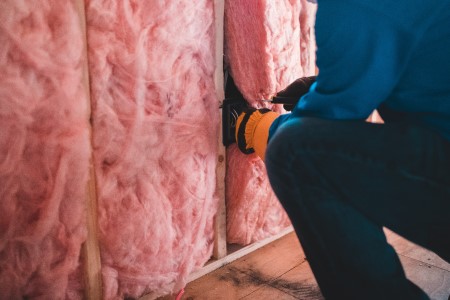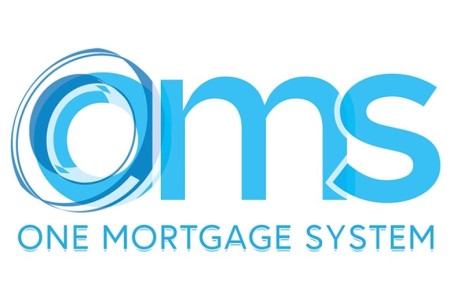
The UK’s buy-to-let (BTL) market is an important driver of investment into bricks and mortar. This sector of the property market has been continuously booming as the demand for tenants continues to rise, bringing more traction to investors looking for a medium to long term investment. The number of landlords in the UK now sits above 2.65 million people and with demand for rental properties continuing to rise, the sector is an attractive option. But what is buy-to-let property? We are looking at the definition, types of buy-to-let properties and the things to consider in property investment.
Source: The Negotiator
What is buy-to-let property?
In terms of what does buy-to-let mean, it is the act of an individual or company purchasing a property with the intention to ‘let’ it out to tenants.
Buying a property for first timers who are hoping to get onto the property ladder is a challenge due to the price entry barrier and high deposits. Meaning, we are very much a society of ‘generation rent’ whereby half of the millennials are very likely to rent into their forties. Many believe they’ll be drawing on a pension before they even consider buying.
Is a buy-to-let a residential property?
BTL properties are often flats or house shares, generally found close to city centres. This is where property prices are often very high but renting becomes an affordable living option for those looking to stay within walking distance to work.
The May House Price Index from Rightmove shows the average asking price across the UK is currently £367,501 this month according to their research. This marked the fourth consecutive rise, putting prices £55,000 higher than pre-pandemic.
During 2020, Statista found that tenants aged between 25-34 were the largest rental group within the UK. The range totalled 1.4 million private renters, despite the increase in the number of homeowners for every age band. Additional research from Statista found private renters, aged 65 and over, was the largest household tenure group in England in 2021, accounting for 6.9 million households.
Source: Statista, Wales Online

What is the advantage of buy-to-let property?
Investors may ask themselves “what does buy-to-let mean for me?”. Well, there is plenty of opportunity within the market. There are many reasons why people rent. Equally, there are many reasons why people become landlords. For those looking to invest in property, there are a few things to consider. It’s important to ask yourself if being a landlord is for you:
- Can you deliver the type of property tenants are looking for?
- Are you looking to rent a property closer to where you are, or from abroad?
- Will you require someone to manage the property and tenants on your behalf, such as an estate agent – if so, have you considered the costs for this?
What does buy-to-let mean for your finances specifically? Let’s look at some of the advantages of buy-to-let properties. There are two main advantages for those who own a buy-to-let property.
1) Regular Income: What is buy-to-let property worth month to month?
Landlords typically receive rental payments monthly. This allows them to pay any existing debt on the residential property, such as contributing towards a mortgage.
The rental payments could also help fund any renovation or refurbishment the property needs – to repair damage such as wear-and-tear. On top of this, landlords also generally factor in a profit, to make the endeavour worthwhile.
HMOs and their advantages
Houses in multiple occupation (HMOs) are a form of buy-to-let property. With an HMO, landlords could receive a rental yield up to three times higher than renting a whole property on one agreement. However, they also have the potential to require additional long-term maintenance costs.
Whilst some long-term lenders require two years or more landlord experience for an applicant to be accepted for an HMO mortgage, short-term finance works differently. For example, MFS consider applications on a case-by-case basis. This is so we can look at the larger picture, taking in the applicant and the property on individual merits rather than one tick-box criteria. Meaning, we can provide new landlords with a residential bridging loan, should an HMO opportunity present itself to them.
Read our latest case studies to find out more.
HMO tenants
HMOs are mostly popular amongst young professionals and students:
- They can decrease the monthly rental cost between tenants
- Minimises risk for the household (should one person need to exit their tenancy early and there becomes a payment gap in the properties monthly fee)
For more information on HMOs, read our HMO regulation checklist – covering many aspects new HMO landlords need to be aware of when taking on an HMO property.
2) Capital growth: What is buy-to-let property worth in the long term?
Owning a BTL property means the landlord’s asset will potentially rise in value over the long-term in line with national house price increases. If the landlord decides to sell the property, the market value of the house could be a lot higher than when initially purchased. Therefore, generating an increase in capital growth.
Over the last ten years or so, the average UK property prices has grown from £169,866 to £278,000 (July 2011 vs March 2022). That’s more than a 50% increase – an impressive capital growth. If a landlord had bought a buy-to-let property in 2011 and sold in 2022, they would have made a profit on the sale of the asset, on top of regular rental payments. This can provide landlords with the opportunity to pay off any existing debt on the asset.
Source: Office for National Statistics
However, any increase on property will be subject to Capital Gains Tax. This tax will vary from person to person. To understand more about different charges relating to Capital Gains Tax, please read the government guidelines.

What is the future of buy-to-let?
The pandemic has changed what tenants want from a rental home. We recently conducted our own survey which uncovers how landlords have fared during the pandemic over the last 18 months and provided an insight into how they intend to approach the upcoming year.
Landlords are adapting to these challenges post-COVID. After lockdown restrictions lifted, commentators were confident that demand for rental properties will continue to increase. There are also new property investment hotspots that prospective landlords need to be aware of. One element that has emerged from Covid-19 is the ability to work from home. This has led to more tenants considering less expensive properties within commuter belts. Commuter towns generally offer tenants:
- Cheaper rent
- More space
- A garden / access to communal green spaces
Growing demand for BTL properties located just outside cities in recent years is a great example of this. They are popular locations as tenants can commute to London and other major cities when required but benefit from cheaper rent and cost of living.
Looking for upcoming commuter towns located within London’s commuter belt? Check out the MFS top 5 commuter towns.
Things to consider in buy-to-let property investment
1. Rising interest rates
One of the most important trends to watch out for this year is changing interest rates. On the 16th June the Bank of England announced that they had increased the base rate from 1% to 1.25%. This will affect all homeowners, particularly those on a tracker mortgages and variable mortgages.
For buy-to-let investors, a change to the base rate could have financial knock-on effects. Many mortgages and loans ‘track’ the Bank of England’s rate. So, when the rate goes up, so does the amount of interest the borrower must repay. If an investor has multiple loans against different buy-to-let properties, the higher interest on their repayment could add up. This could, in turn, affect their next buy-to-let mortgage and how much debt they are able to take on as the cost of borrowing rises.
If you’re looking to re-mortgage or exit your buy-to-let bridging loan, you can now exit using our specialist buy-to-let mortgage product. Our buy-to-let mortgage calculator can indicate which BTL mortgage is suitable for you.
2. Accounting for changing priorities
Property investors must also consider the ways in which people’s priorities are changing when it comes to their homes. The pandemic reportedly caused a ‘race for space.’ In truth, this is over-simplifying the situation. The shift to remote working during the pandemic, and the prospects of hybrid working arrangements in the future, will change how and where people live. No longer commuting to an office every day, buyers and renters have more freedom when choosing the location of their home.
There is also likely to be more onus on properties that have room for a home office and some outdoor space. But infrastructure and the surrounding area will also matter. For example, in 2019 we asked homebuyers to list the features that matter most to them in a property. Eighth on the list was reliable, high-speed broadband, with 82% citing this as important. We repeated the survey in 2021 – high-speed broadband then came third on the list, with 88% now saying this mattered a lot to them.
It might seem a small change, but buy-to-let investors must take note of:
- Renters who they want to attract
- Potential buyers when they sell later on
Both are now prioritising different qualities in a property. Staying abreast of these changing preferences will be important as investors weigh up their next purchase in 2022.
Our Homebuyer Wishlist 2021 highlights these key changes.
3. Additional works
Another aspect to consider with buy-to-let properties is the potential to refurbish or renovate your asset(s) on a regular basis. Properties in need of refurbishment are less likely to receive a high-earning rental income for landlords. By refurbishing your buy-to-let, you could increase the overall spec of your property. Therefore, allowing you to charge a premium for the increase in living standards. However, be sure that your spec and rental income reflects the tenants you are looking to attract.
4. Finding the right buy-to-let loan
Of course, finding the right loan will be high on the list of consideration before any property purchase. This is true for landlords whether searching for fast bridging finance or buy-to-let mortgages.
In the UK’s competitive and fast-paced property market, buy-to-let investors need to find a lender that can support them with equally fast, flexible financial products. MFS does just that. We have a ‘can do’ approach to lending. In other words, we find solutions to challenges that some lenders might run away from. We use our 15 years’ experience as a specialist lender to overcome problems and deliver loans to clients, regardless of how unique or complicated their situation might be. Ideally positioned with a range of innovative bridging products and buy-to-let mortgages, we’re able to help investors facing a wide variety of circumstances.
Want to know if you can apply? Then find out more about who we lend to. To find out more about how MFS can support brokers and investors with their buy-to-let purchases in 2022, contact us today.
In Summary
We hope we could clarify for you the definition of what a buy-to-let property is, what it could mean for you as an investor and the things to consider when investing in property. Buy-to-let is still an attractive way to invest in property and there are no signs in sight that this will change in the near future. Download here our infographic on how to find the right buy-to-let property.
Disclaimer
MFS are a bridging loan and buy-to-let mortgage provider, not financial advisors. Therefore, Investors are encouraged to seek professional advice.










